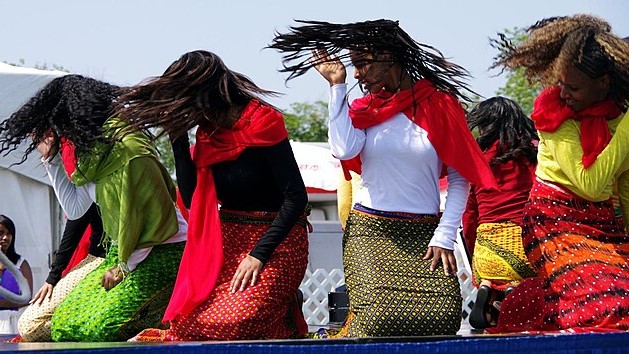In Eritrea, the rhythm of traditional dance resonates far beyond performance halls and village squares. It is an enduring expression of cultural identity, a medium through which history, community, and collective memory converge. Across the country, these dances are not mere entertainment; they are a language of gestures, steps, and music, transmitting stories that span generations.
The Tigrigna people, among Eritrea’s largest ethnic groups, illustrate this connection through lively, celebratory movements that echo the rhythms of agrarian life and communal tradition. Performers move in synchrony with instruments such as the krar, a lyre-like string instrument, and the kebero, a double-headed drum. Each step, each turn, is a reflection of community cohesion, a vivid reminder of the bonds that knit villages and families together.
In the highlands, the Bilen dance offers a striking counterpart, notable for its intricate footwork and colorful attire. Performances often unfold during social gatherings, inviting participants to join the movement and feel the energy that courses through these communal rituals. The dances serve as both spectacle and participation, reinforcing the social fabric while celebrating the nation’s rich heritage.
Traditional dances are closely entwined with Eritrean ceremonies and festivals. From Fasika (Easter) to BuHai (New Year), steps and sequences accompany religious observances, rites of passage, and seasonal celebrations. The performances bridge generations, as elders guide younger participants through sequences imbued with meaning and history. Each movement carries symbolic weight, portraying narratives of bravery, perseverance, or agricultural practice, transforming communal events into living classrooms of cultural education.
Across Eritrea, dance remains a living repository of memory and identity, its continued practice essential to cultural preservation. As contemporary influences reshape society, these traditional expressions endure, connecting present-day participants with the stories and values of their forebears. In every sway, stomp, and gesture, Eritrean dance affirms the vitality of a culture determined to celebrate its heritage while passing it forward.
Sources:
- Tekeste Negash, Eritrea: The Cultural Landscape, Nordiska Afrikainstitutet, 2011.
- Yohannes Abraha, “Dance and Tradition in Eritrea,” African Arts, vol. 53, no. 4, 2020.
- Ruth Iyob, The Eritrean Struggle for Independence, Cambridge University Press, 1997.
- Fana Gebrehiwet, Music and Dance of Eritrea, Asmara University Press, 2015.


